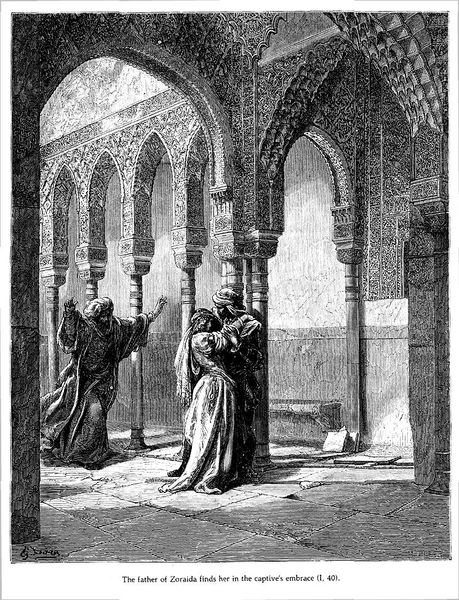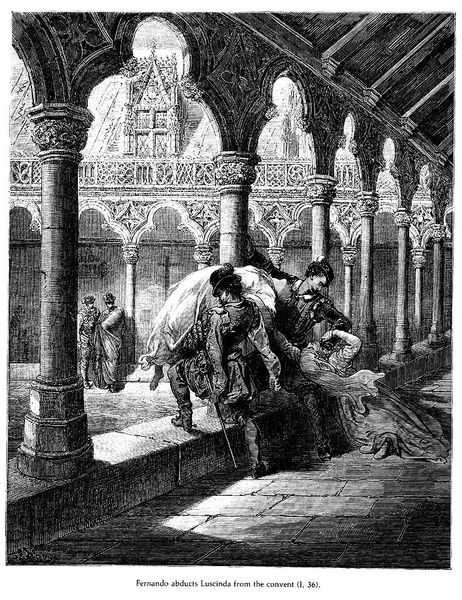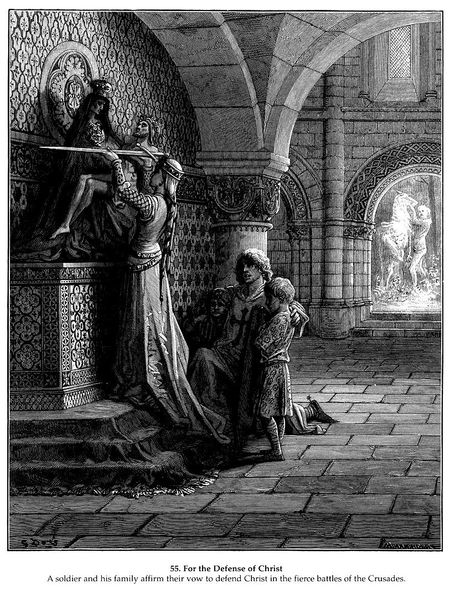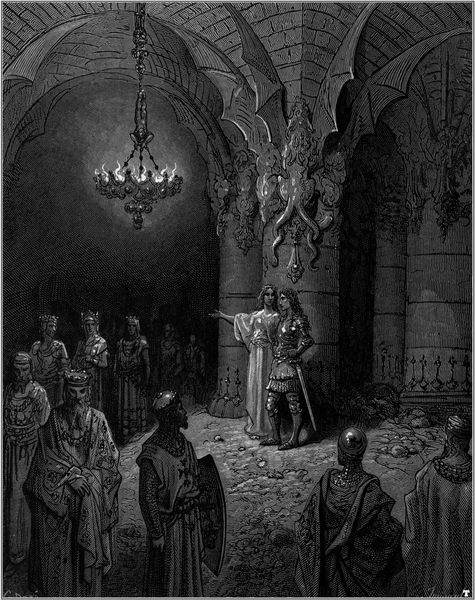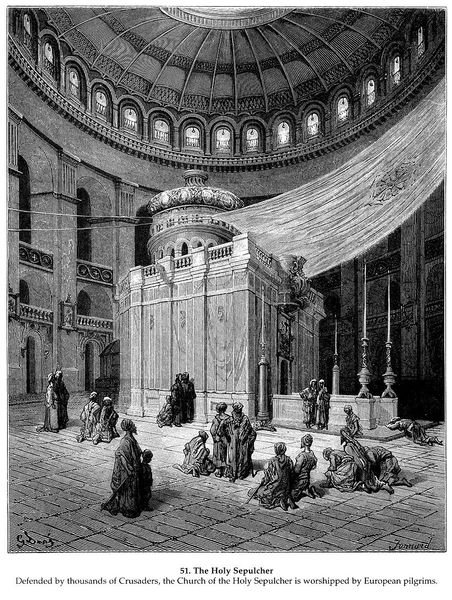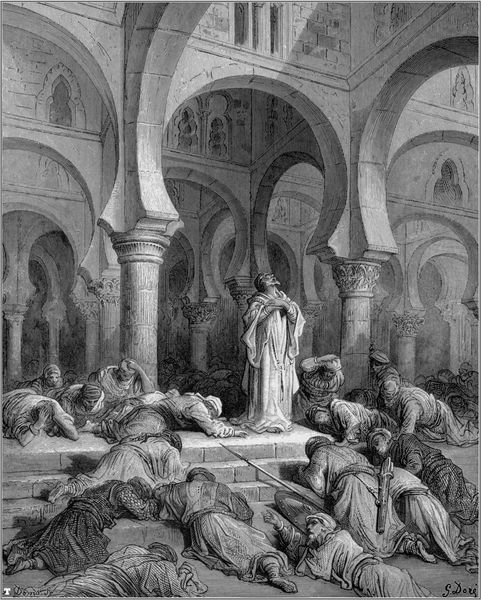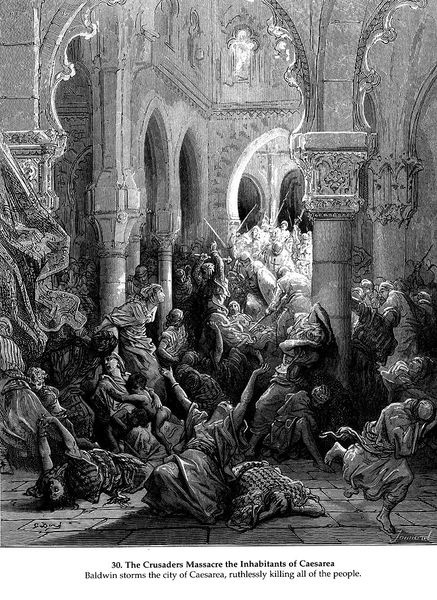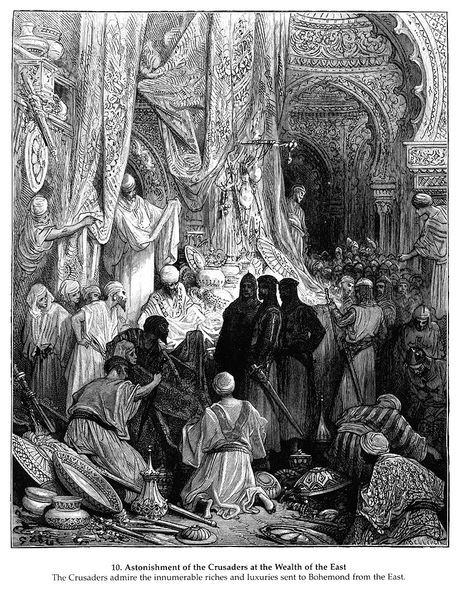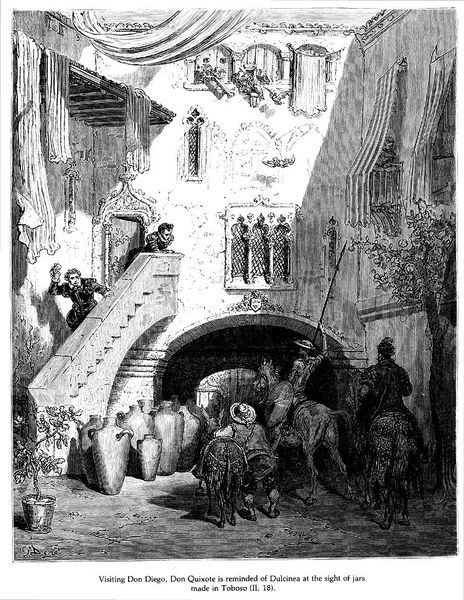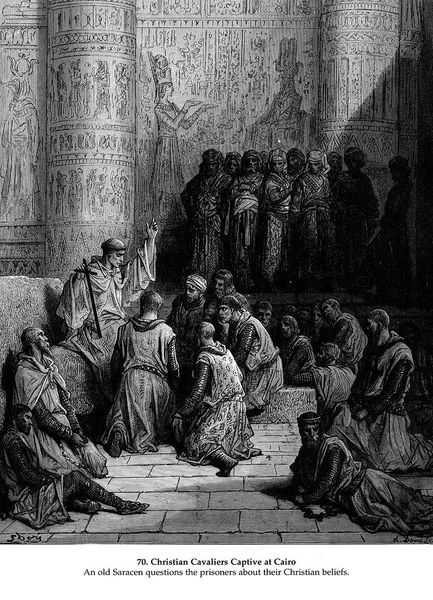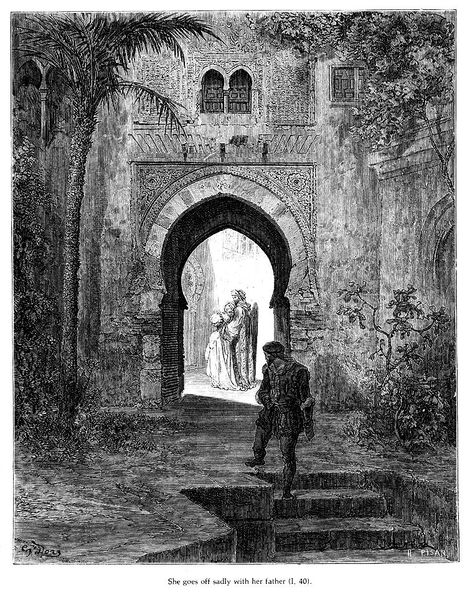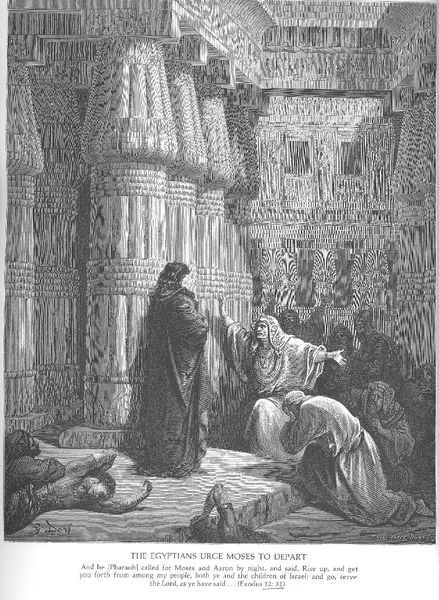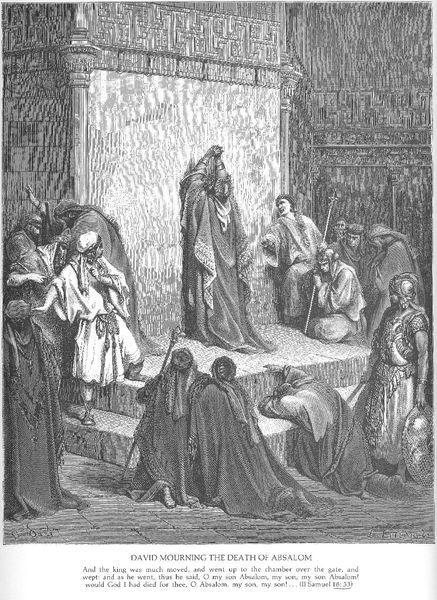
drawing, print, photography, engraving, architecture
#
drawing
#
medieval
#
narrative-art
# print
#
sculpture
#
figuration
#
photography
#
arch
#
line
#
engraving
#
architecture
#
monochrome
Copyright: Public domain
This engraving is from Gustave Doré’s illustrations of Miguel de Cervantes’s 17th-century novel "Don Quixote," a story deeply embedded in Spanish identity. Doré, a 19th-century French artist, visualizes a scene where Don Quixote, the idealistic and somewhat delusional knight-errant, is shown a procession of servants by the sorcerer Montesinos. The architecture has Moorish influences, evidence of Spain’s complex history of cultural and religious exchange. The servants, cloaked and anonymous, could be interpreted as representing the faceless masses, or perhaps the hidden histories and identities that Don Quixote, in his chivalric fantasy, overlooks. Doré’s work invites us to consider how narratives can perpetuate or challenge stereotypes. The emotional resonance of this image lies in the contrast between the grandeur of the setting and the anonymity of the figures, prompting us to reflect on the power dynamics inherent in storytelling.
Comments
No comments
Be the first to comment and join the conversation on the ultimate creative platform.
